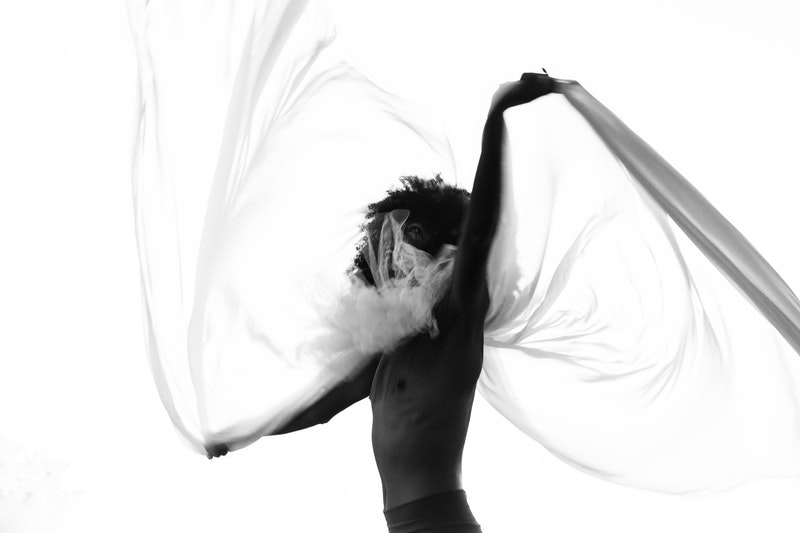September 25th, 2020
Guest writer for Wake Up World
Since the very beginning of all religious and spiritual drive, there has been a deep prejudice against the body.
The body has been called carnal, worldly, lustful, sinful, and illusory. At best, it has been thought of as mere dust, at worst, it has been thought of as a doorway to the devil himself.
What’s worse is that when the body has been celebrated (such as in many neo-tantric practices), it has been fetishised and in some ways objectified.
There’s no doubt about it: we’ve had a weird relationship with the body as a species.
On one hand, we either condemn it and try to subjugate it – on the other hand, we indulge it to the extreme. We tend to swing from one side to the other, never seeming to find a middle ground.
Thankfully, times are changing. We’re sick of treating our bodies as flesh suits to be ascetically denied or endlessly satiated. Instead, we’re beginning to understand and respect our bodies’ wisdom, intelligence, and profound connection to the truth of reality.
We’re starting to see that the body is a sacred doorway to the Soul and the sacred wild Spirit of Existence.
But as always, seeing our bodies as sacred is not easy. There are layers upon layers of inherited beliefs, prejudice, and wounds that obscure our ability to see clearly. Not only that, but modern spirituality – with its tendency to emphasize disembodied “transcendence” – can make it extra hard for us to come into a healthy relationship with our bodies. This is why embodied spirituality is so desperately needed.
What is Embodied Spirituality?
Embodied spirituality refers to a lived experience of spirituality that is grounded in the body. When we embrace embodied spirituality, we come out of our minds and back into our bodies: into that which is visceral, instinctual, and deeply felt through the senses. We see that the body isn’t just a temple of the Divine, but a living expression of Spirit. As such, the body becomes a source of tremendous wisdom and insight: a doorway to the present moment. Not only do we see the body as sacred, but we see it as a microcosm of the macrocosm – it becomes a path to both the transcendent and immanent nature of the Divine.
Your Body is a Storehouse of Trauma
As psychiatrist Bessel Van Der Kolk writes in his book The Body Keeps Score:
The body keeps the score: … the memory of trauma is encoded in the viscera, in heartbreaking and gut-wrenching emotions, in autoimmune disorders and skeletal/muscular problems
Renowned psychologist and trauma-expert Peter Levine goes on to write:
Traumatic symptoms not only affect our emotional and mental states, but our physical health as well.
And as psychotherapists C. Zweig and S. Wolf write:
We may forget an abuse, but the body does not. Like shock absorbers, our bodies absorb the wear and tear of emotional experience. We may defend against it, but our bodies take the heat. And slowly, over years, the patterns of stress and trauma accumulate. Inevitably, if we do not become conscious of the shadows lodged in our muscles and cells, they begin to tell their tales.
As we can see, body and mind are not separate. Whatever painful experiences we undergo in life are stored within our bodies as trauma. This trauma manifests as muscle tension, mysterious aches and pains, ‘body armoring’ and holding patterns, autoimmune disorders, and endless other illnesses.
Without unpacking, exploring, and releasing what’s within our bodies, we remain frozen and unable to move forward. This is the first reason why developing a friendly approach to our bodies is crucial – it is a core element of spiritual healing and transformation.
Your Body is a Gateway to Spiritual Wisdom
Our bodies are also a storehouse of great wisdom.
As the great German philosopher Nietzsche once wrote:
There is more wisdom in your body than in your deepest philosophy.
And as Buddha once said:
The body is anchored in the here and now while the mind travels into the past and future.”
Although at a core level, we aren’t defined by our physical blood and bones, our bodies are an undeniably powerful gateway to the present moment. Not only do they anchor us into the Eternal Now (hence why many meditation techniques focus on the breath and body), but they are also insanely accurate truth-detectors. They help us to both tune-into what is true and real, on a visceral felt-level, and what is false.
Indeed, our bodies are great and multi-layered gifts. They carry an intelligence that predates the mind and an intuition that is directly aligned with the Soul.
As mythopoetic author and psychologist Marion Woodman writes,
This is your body, your greatest gift, pregnant with wisdom you do not hear, grief you thought was forgotten, and joy you have never known.
There is so much potential for healing, revelation, integration, and regenerative grounding on offer when we honor the body; when we practice embodied spirituality.
But … where do we start?
3 Ways to Practice Embodied Spirituality
There are many ways to practice embodied spirituality taught by a vast array of people.
Such approaches cater to different levels of the human experience ranging from relieving chronic pain all the way to releasing spiritual blockages.
Some examples include:
- Massage (biodynamic, huna, etc.)
- Acupuncture/acupressure
- Body-centered mindfulness and meditation
- Somatic experiencing
- Somatic psychotherapy
- Breathwork
- Dance/movement therapy
- Yoga
Below I’ll briefly explore three of these practices:
1. Yoga

Yoga is an ancient mind-body-spirit practice that some historians date back to being 10,000 years old. These days, there are a wide array of approaches to yoga – but not all of them are suited for trauma healing and embodied spirituality.
When exploring yoga as a way of befriending your body and learning from its wisdom, I recommend sticking to older and gentle forms of yoga – such as hatha yoga. There are also an increasing number of trauma-informed yoga teachers out there who incorporate their particular approach to yoga with modern findings in mental health studies. If you gravitate strongly toward yoga, I recommend seeing whether there are any trauma-informed and/or hatha yoga teachers near you.
Restorative yoga is also another approach you might like to explore (although I have little experience with it), as it is said to focus on relaxing the nervous system and centering the mind.
So, why yoga?
Yoga is a wonderful approach to embodied spirituality because not only does it tend to include a philosophical/spiritual element, but it also gives you a direct and visceral understanding of your body. It helps you to develop self-awareness of your strengths and limitations, areas that hold tension and trauma, as well as how to release that. Many people have experienced tremendous healing thanks to yoga. At its core, it has the potential to be a moving form of meditation that gets you directly in touch with the timeless wisdom carried deep within you. It’s no wonder that this modality is so popular and continues to live on after such a long expanse of time.
2. Breathwork

Breathwork is, quite simply, the practice of working with your breath to calm and clear your mind and body. This is a practice that, like yoga, has been around since the dawn of humanity.
Benefits of breathwork can include, for example, relaxing your nervous system, enhancing your mental wellbeing, improving your immune function, giving you more energy, increasing creativity and focus, and even inducing mystical experiences.
As your primal bridge to the Life Force energy, your breath is a powerful way of practicing embodied spirituality because it is always grounded in the moment. And as you probably know by now (thanks to Eckhart Tolle and the like), the present moment is all that truly exists!
There are many forms of breathwork out there such as pranayama, holotropic, rebirthing, shamanic, and simple mindfulness meditation breathing techniques.
If you’d like to learn more about this embodied spirituality approach, read our breathwork article.
3. SOAR

SOAR is a technique we devised back in 2017 for highly sensitive and empathic people who struggle with taking on too much energy from others. But in reality, SOAR is a practice that can be done by anyone.
SOAR stands for:
Stop – stopping or surrendering to what is here: simply noticing what’s going on
Observe – observing your inner/outer experience (what external sounds/smells/colors/shapes can you observe, and what inner textures/feelings/sensations can you pick up on?)
Allow – allow and lovingly embrace what is arising without resisting (knowing that what you resist persists)
Rest – rest and release: allow the sensations to dissolve naturally without trying to push or force them
SOAR is about remaining open to the painful or uncomfortable emotions/sensations within us without attaching to them or having that energy stay stuck within our bodies. This is a meditative practice that helps us to (1) practice energetic hygiene (2) become more grounded in our bodies and (3) stay connected to the present moment. As such, it’s a wonderful approach to embodied spirituality.
If you’d like to learn more about it, watch our video below:
As Clarissa Pinkola Estes writes in her powerful book Women Who Run With the Wolves,
The body remembers, the bones remember, the joints remember, even the little finger remembers. Memory is lodged in pictures and feelings in the cells themselves. Like a sponge filled with water, anywhere the flesh is pressed, wrung, even touched lightly, a memory may flow out in a stream.
If our bodies play such a big role in our lives – in both storing trauma and tremendous wisdom – doesn’t it make sense to make them a central part of our spiritual journey? Doesn’t it make sense to see this earthly vessel that we all carry as sacred and worthy in its own right?
Embodied spirituality is not just a necessity but it is a sign of mature, integrated, and balanced spirituality that doesn’t deny or indulge the body, but honors and respects it.
So tell me … what role has your body played on your spiritual journey? I’d love to hear below!
Recommended articles by Aletheia Luna:
About the author:
Aletheia Luna is an influential spiritual writer whose work has changed the lives of thousands of people worldwide. After escaping the religious sect she was raised in, Luna experienced a profound existential crisis that led to her spiritual awakening. As a psychospiritual counselor, tarot reader, and professional writer, Luna’s mission is to help others become conscious of their entrapment and find joy, empowerment, and liberation in any circumstance. See more of her work at lonerwolf.com.
This article, Your Body is Sacred: 3 Ways to Practice Embodied Spirituality, was originally published on lonerwolf.com, reproduced with permission.
 RSS Feed
RSS Feed















 September 25th, 2020
September 25th, 2020  Awake Goy
Awake Goy 



 Posted in
Posted in  Tags:
Tags: 













